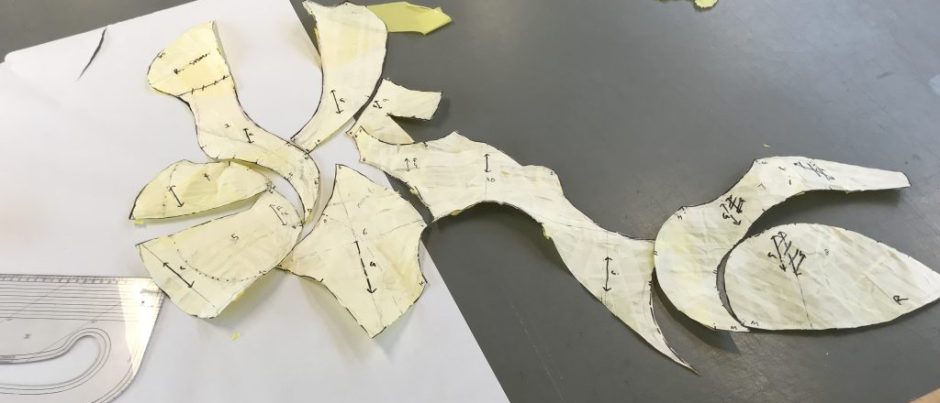Realising the Resource
The results of the focus group gleaned that the resource would need to be photograph friendly. So, I kept the same colour coding system, and populated each area with real information (charity shops in north, north east, east, south east, south and south west London, that are located close together). I displayed this on the wall, as large as was practically possible, given the stress the students placed on this feature.
Although the walls of the studio are populated with safety signage, costume images, and equipment manuals, this was the first time I had created a visual display of a learning resource I have designed for this space.
Data Collection Method
Since the initial designing of the poster display, I had been considering ways to collect the data on it’s use. I was inspired by something I saw in passing at CSM, pictured below:

I decided to utilise this interactive, participatory, anonymous data collection method within the costume studio, on a blank wall, below the display:

In direct response to the feedback from student participants, who reported during a focus group that they would take a photo, I have asked the question ‘did you take a photo of this suppliers poster?’.
Data from the focus group showed that there is a distinction between the different forms this resource could take, to in order to gain further insight into this, I also asked the question, what do you prefer?’ with three options; printed leaflets, downloadable documents, or posters – these being the three possible forms of this map explored in the focus group. Of course, it must be acknowledged that some students may have looked at it and taken a photo, but not interacted with it.
I placed a participant information sheet alongside this, linked here, to inform participants of the project and what their involvement means:
Information Sheet – Poster.docx
I displayed this poster for one week, from the 9th December to 13th December – the last week of the autumn term 2024. Ideally, this would have spanned a much longer period of time.
Below is an image of the poster in situ:

Data Integration
Knowing that this data would be almost meaningless without some other data to contextualise or compare it to, I sought additional data sets. So, also following the topics discussed in the focus group, I contacted the CSM technical moodle manager to ask for data on ‘digital footfall’ of our equivalent online resources, where ‘downloadable documents’ can be found of suppliers lists, including sustainable suppliers. I also used observation to collect data on the number of ‘handouts’ given out to students that week, in the form of a tally.
By comparing the data sets for these different types of openly accessible resource, I should be able to glean some understanding of how useful this kind of resource might be in engaging students in more sustainable costume practices through “mixed-methods analysis” (Kara, 2015) by comparing the ‘downloadable documents’ data, and ‘handouts’ data to my interactive poster data.
However, it must be noted that the comparison and integration of these sets of data is flawed, in that one data set spans a much longer period than the other two, making their comparison questionable. The digital footfall can only be taken over a term as a whole – when students accessed it is unknown within this long period.
Ideally, all three sets of data would span the whole term. This would produce much more accurate, reliable data. However, within the limitations of this action research project, I will use what I have to glean what I can.
References
Kara, H (2015) ‘Analysing Data’ in Creative Research Methods in the Social Sciences : A Practical Guide‘, Policy Press, Bristol. pp.99 – 119. Available from: ProQuest Ebook Central. [05 December 2024].
